How I Eliminated Pain Naturally

This is the transcript of my podcast by the same name hosted at Hacker Public Radio .
Good day, good listener of Hacker Public Radio, and welcome back to the Paul Quirk show. I’m Paul, and I will be your host. It’s been a while since my last podcast on HPR, but I’m thankful to all of the contributors who have kept it going for nerds like me.
Today, I’d like to talk to you about my journey with pain. I’m in my 50’s now, and having been diagnosed with carpal tunnel syndrome in my 20’s, and osteoarthritis in my 30’s, I’d like to share with you how I managed to overcome these naturally and without surgery so that today, I live free of physical pain.
Before I get started, I’d like to share my view of what pain is. We live in a culture where we believe pain is bad and needs to be avoided at all costs. This feeds in to the natural response of being fearful of pain. However, I have come to learn that pain is simply the body’s way of telling the brain that there is a problem. Quite often, the first response to pain is to take some sort of drug or medication to make the pain go away. While I agree that pain is not enjoyable, I think the overuse of painkillers is a folly of modern medicine, because I believe that sometimes pain is an early warning sign that means I need to make a lifestyle change to steer my body towards better health. This isn’t always easy, but our understanding of this has grown and changed significantly over the past century.
In the 90’s, I was a technical support technician and a COBOL programmer, so I spent a lot of time with a keyboard and mouse. This lead to a diagnosis of carpal tunnel syndrome by my doctor in my mid 20’s. Not wanting to rely on drugs or surgery, I looked for a natural solution. I started with researching keyboards. Most ergonomic keyboards of that time were prohibitively expensive, except for one; the Microsoft Natural keyboard. The first generation of Microsoft’s natural keyboard was released in 1994, and was designed for Microsoft by Ziba Design and manufactured by Key Tronic. I was glad I bought my keyboard when I did, because Microsoft replaced it with the inferior Natural Keyboard Elite which did not include a riser for negative tilt and they shrunk down some of the keys. Today, my keyboard of choice is the Microsoft Natural Ergonomic Keyboard 4000, which I consider to be the only ergonomic keyboard worthy of succeeding the original. You would have to pry it from my cold, dead, carpal tunnel syndrome free hands before I’d part with it.
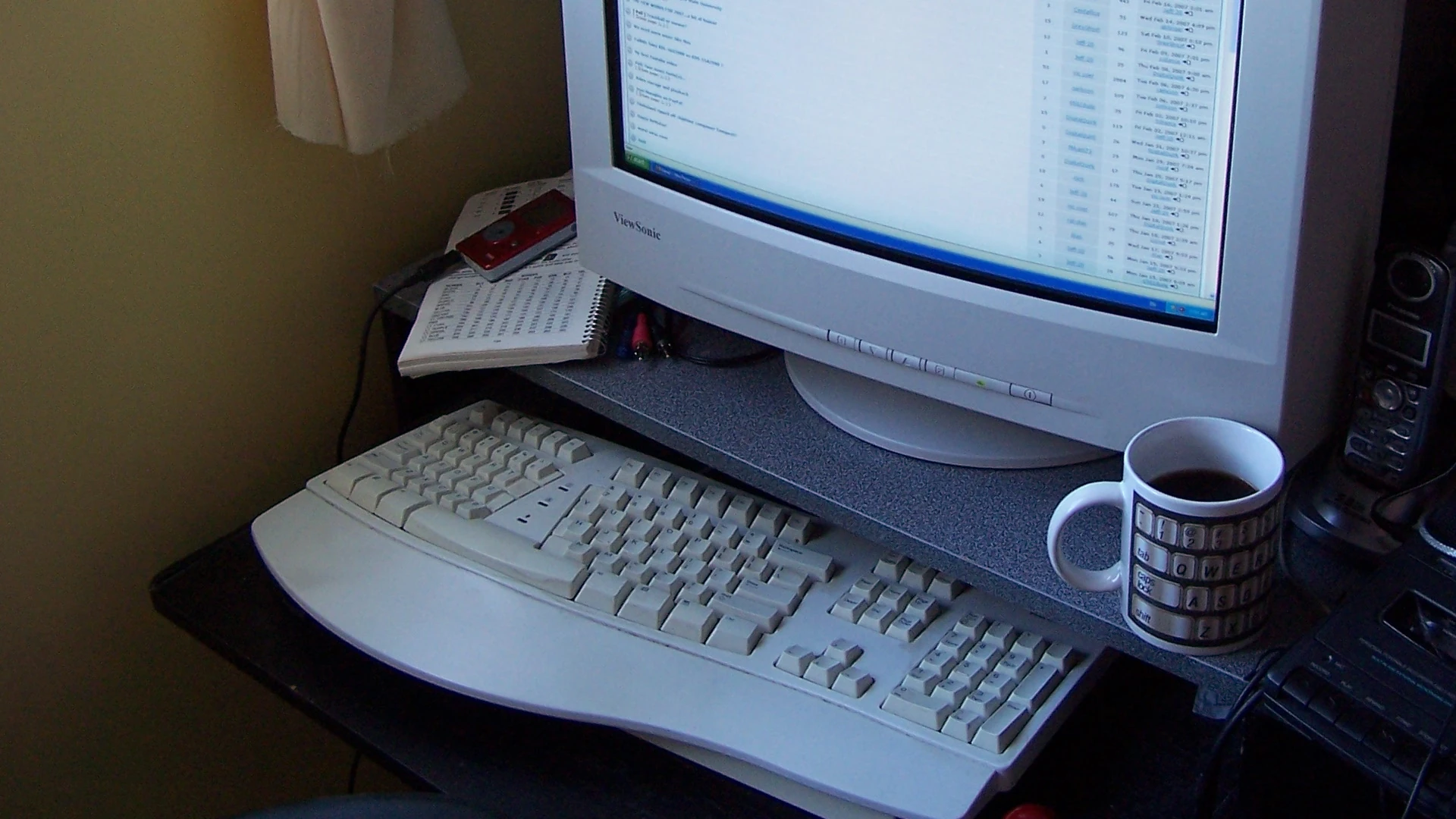 My first ever ergonomic keyboard.
My first ever ergonomic keyboard.
The other thing I changed in my desktop environment was to stop using a mouse. Today, my pointing device of choice is the ergonomic trackball that uses my thumb to move the ball. I learned that my thumb was stronger than my fingers, having more muscles that are shorter, and the ergonomic design of these trackballs allows my hand to rest in a neutral position, which can be difficult to achieve when pushing a square box around a desk. Also, it didn’t matter that my Microsoft Natural keyboard took up so much desk space anymore, as a trackball doesn’t need much desk space. I actually use two ergonomic trackballs; I use the Logitech M570 for my right hand, which usually travels with my laptop computer, and the Elecom EX-6 for my left hand. I think being ambidexterous with my trackballs also helped to alleviate issues with carpal tunnel syndrome. I also learned to be ambidexterous in other tasks as well, such as using tools. It can be frustrating at first, but learning to perform tasks equally well with either hand has probably helped as much as the use of an ergonomic keyboard and trackball.
When I was diagnosed with osteoarthritis in my thirties, I was in incredible pain. The act of standing up from a chair was nearly impossible some days, and I required the assistance of a cane most days to function. I inhereted this terrible condition from my mother’s mother’s side of the family, which explained why so many aunts, uncles, and cousins used canes and many did not live very long into old age, as the medications, both prescribed and over the counter, tend to have negative side effects on the organs after used for an extended period of time. Surgery options are invasive and radical, and do not necessarily restore one’s standard of living; while the pain might be relieved, it can come at the cost of mobility and flexibility, and can put stress on other joints. I was determined to find a natural solution.
The first thing I considered was what had changed in my lifestyle. I had to admit that I was not making time for exercise as I did when I was younger. The link between exercise and pain relief, especially when it comes to conditions like Osteoarthritis, is demonstrably true. My mother’s mother, who had a stroke in her early 50’s and lost over half of her heart capacity, was one of the few people on her side of the family that I can remember to live independantly into her late 80’s. After retirement at age 65, she got rid of her car and sold her bungalow to live in a house with stairs within walking distance of the shopping mall so that she would force herself into walking a good distance every single day. She lived with the pain, albeit at a low level, and really inspired me. I wanted to take it a step further and get rid of it entirely, and thanks to a modern invention called the elliptical trainer, I have done just that.
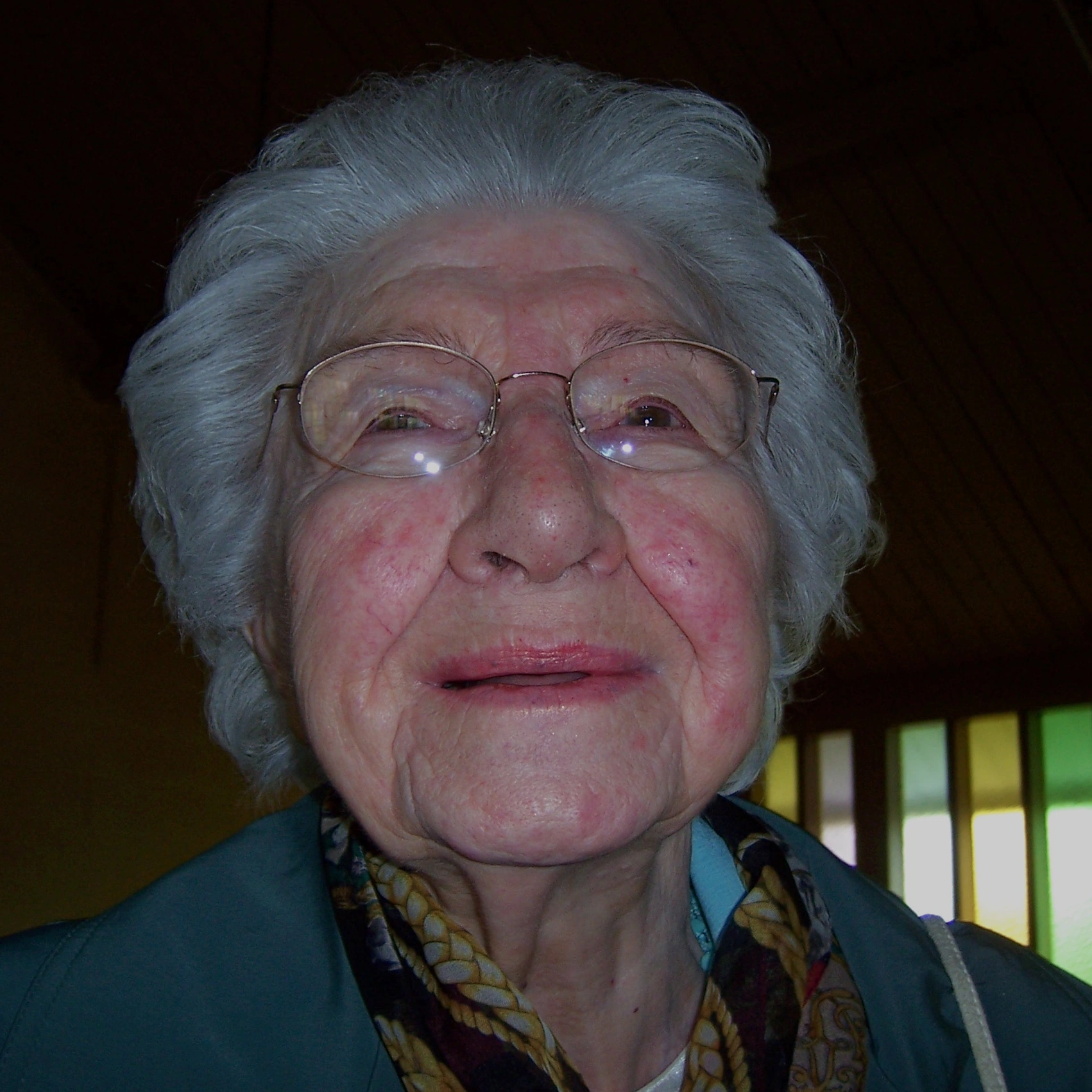 My beautiful Nana at 86
My beautiful Nana at 86
The reduction in pain by exercise is called induced hypoalgesia. According to Wikipedia, Hypoalgesia occurs when painful stimuli are interrupted or decreased somewhere along the path between the input and the places where they are processed and recognized as pain in the conscious mind. The mechanisms behind exercise-induced hypoalgesia are still poorly understood, but it has been shown that the triggering mechanism is caused by the increase in blood pressure that accompanies a good workout. The body senses the increased blood pressure, and the hypothesis is that endogenous opioids are released. Other reasearch also suggests the endocannabinoid system is involved. This is what gives runners their runner’s high.
The problem with traditional exercise, such as running, is that such exercise can cause further damage to the part of the body that is causing the pain in the first place. This means that a good run might eliminate my knee pain today, but things could be worse when I wake up tomorrow. The inventor of the first version of the elliptical trainer, Larry Miller, shared this concern, and so the elliptical trainer was designed to provideall of the benefits of running with none of the impact. Later, hand grips were added, making the modern elliptical machine a modern miracle of medicine that delivers a zero impact full body workout. I say medicine because it is the machine of choice for many physiotherapists today to help their patients recover mobility from strokes and accidents due to its success rate. If the elliptical machine were made into a pill, it would be the best selling drug of all time in the world.
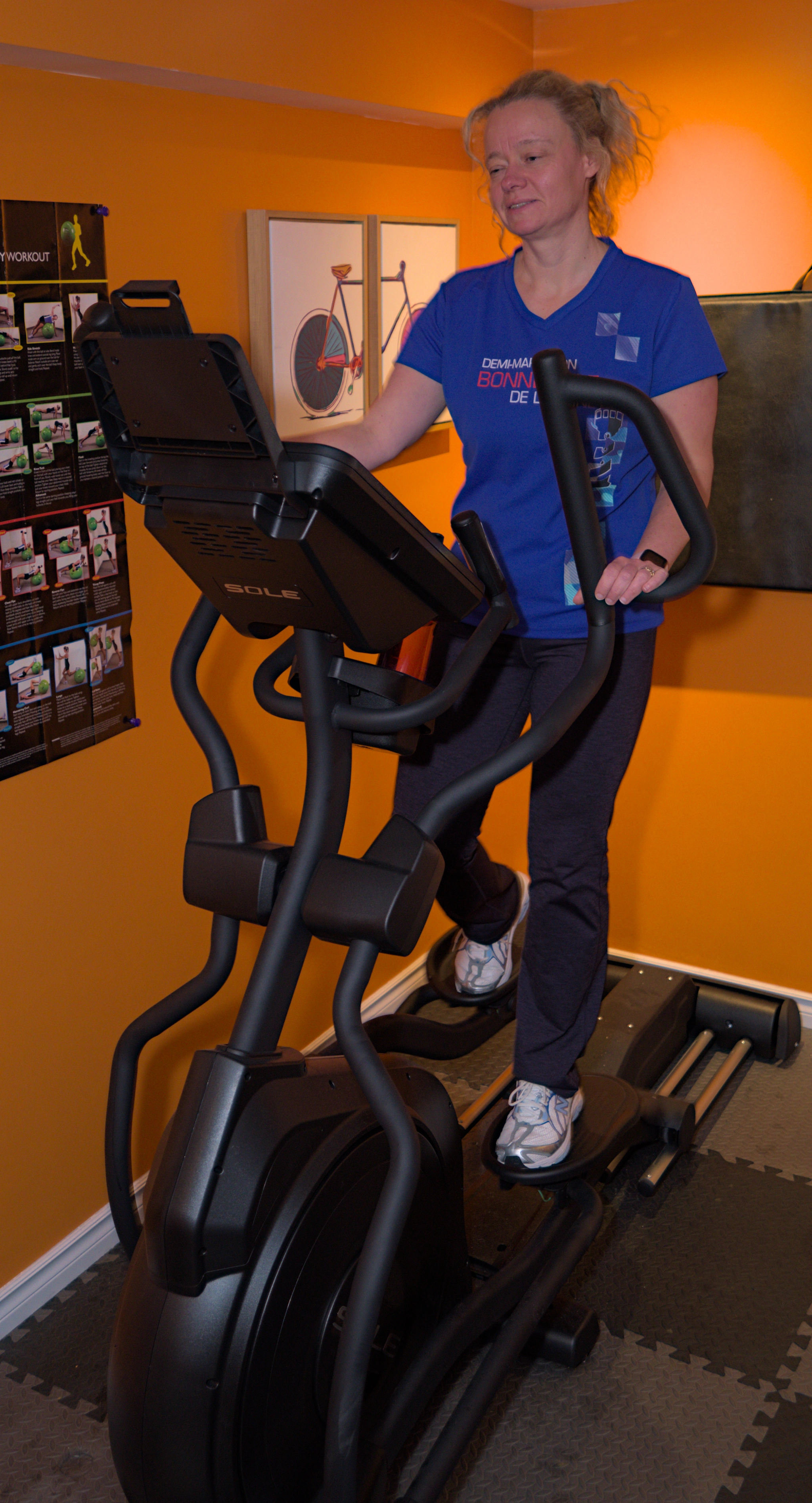 My beautiful wife showing off our elliptical trainer
My beautiful wife showing off our elliptical trainer
The difficult part of using an elliptical trainer is being motivated to use it. What I had to do was to set up a routine first thing in the morning. This was the only time I could do it reliably. I can’t do it at work, and when I get home from work I’m too exhausted to do anything and am often too busy taking care of the necessaries of modern life and getting ready for the next day of work, so what I decided to do was to get to bed earlier so I could wake up earlier. My routine is to get on my elliptical trainer at 5:00 in the morning, usually motivated by some good music, or maybe listening to an episode of hacker public radio. I do the interval training program for half an hour, then I have my shower, get dressed, and then get ready for work. This represents my baseline, and is all the exercise I need to do that day to keep the pain away. I fuel my exercise with a bowl of oatmeal topped with cinamon, a handful of crushed walnuts, and blueberries, which means I usually wake up before 4:30. This is made easy since I developed the habit of keeping an early bedtime, and am naturally exhausted by 8:00pm anyway. Then I reward myself on the weekend by sleeping in until 6 and enjoying a breakfast of bacon, eggs, and hashbrowns, and then enjoying a ride on my bicycle or a hike with my beautiful wife.
 A bowl of high octane rocket fuel for humans
A bowl of high octane rocket fuel for humans
I admit, at first, it was not easy. For the first week, I could only do twenty minutes on the elliptical trainer, and my brain kept questioning why I was putting myself through this torment. But every day, by the end of the exercise, I was glad to have done it. By week two, I had those negative thoughts about exercise for the first ten minutes, but once I got past the ten minute mark, the exercise-induced hypoalgesia kicked in and it was no longer a hardship. By week three, I woke up looking forward to my morning workout. After week four and every day after since, it’s as routine as taking a shower and brushing my teeth and nothing stops me.
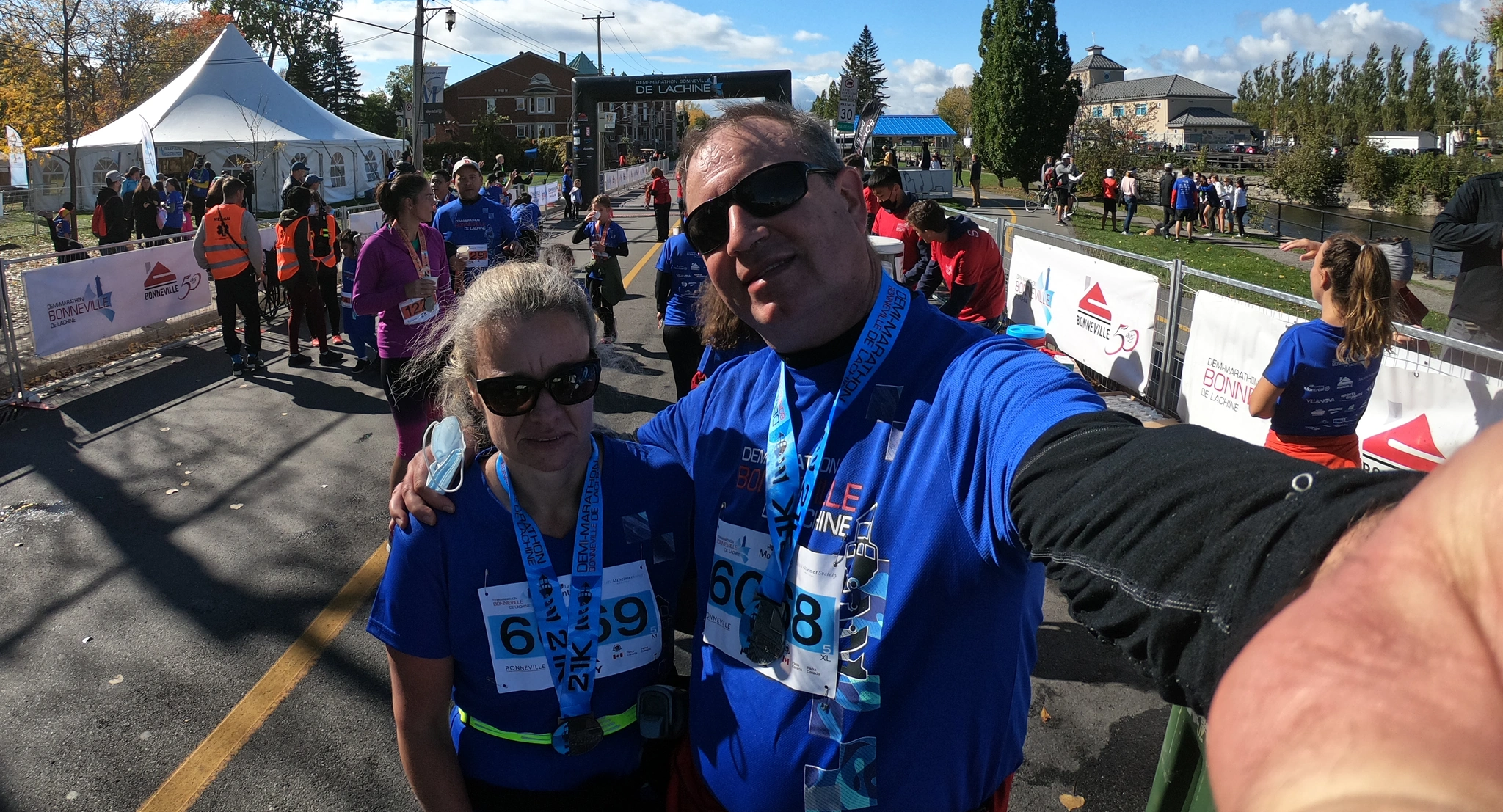 The finish line of my first ever half marathon.
The finish line of my first ever half marathon.
I don’t think the benefits of the elliptical trainer can be understated. I went from having trouble standing up and needing to walk with a cane in my late 30’s and early 40’s, to running a half marathon in Montreal just before my 50th birthday. I’m not saying it made me a superman; I certainly did not break any world records that day and I can still blow out my knee easy enough if I’m not careful, but I can walk long distances up and down many flights of stairs without any hardship whatsoever, and my recovery from injury is a lot quicker. I can now just walk off a rolled ankle that would have laid me up at least a couple of days ten years ago.
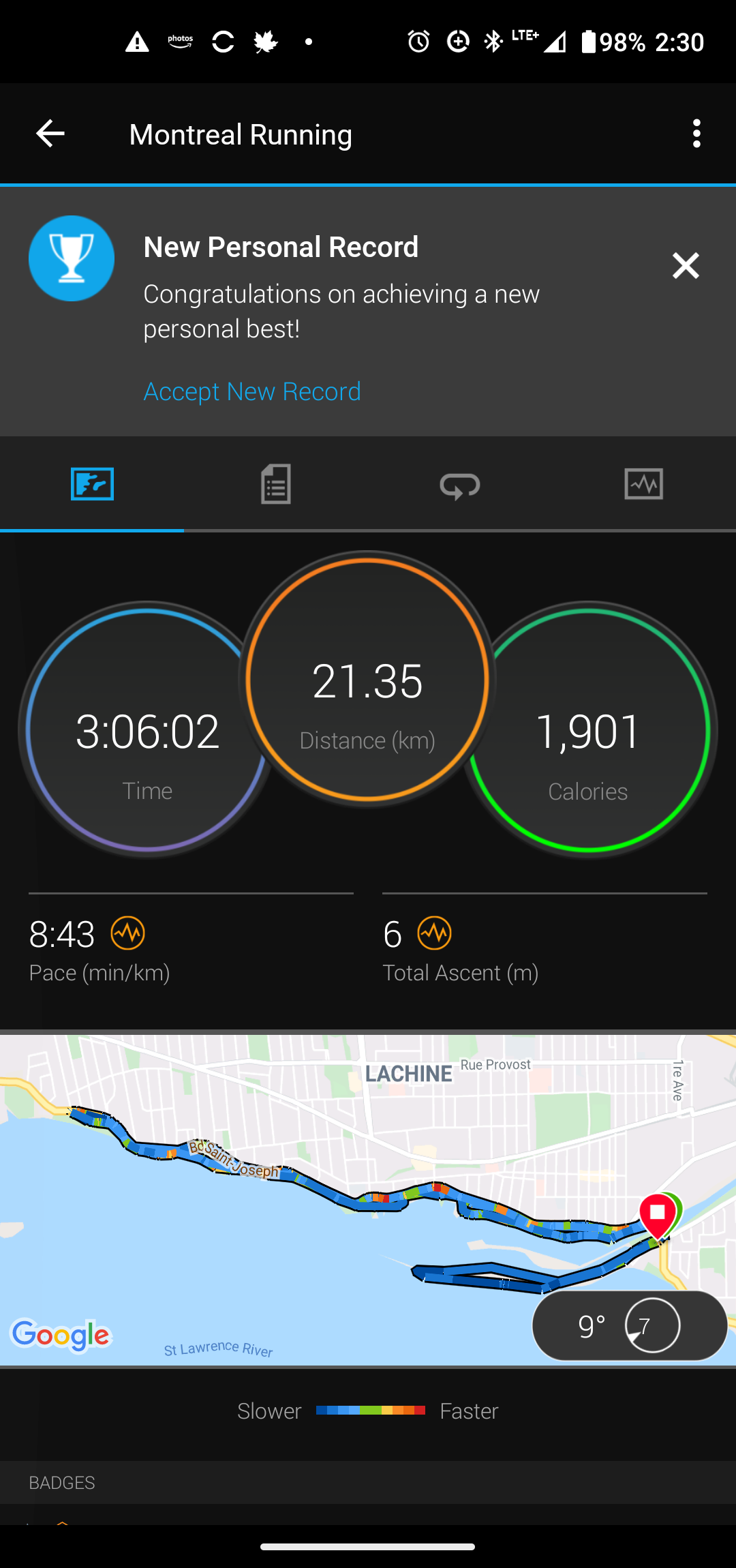 My results, according to my Garmin Forerunner 45.
My results, according to my Garmin Forerunner 45.
You see, it’s not just the exercise-induced hypoalgesia that’s helping me. The elliptical trainer is a trainer, and it helps to develop muscle tissue around the joints and strengthens the tendons. Since this is a podcast, I will let you hear what my knees sound like when I do a squat. If you’re squeamish, you might wish to skip over the next five seconds of this podcast starting in 3, 2, 1.
You can listen to my knees here.
You can hear that my knees are still a mess, but I experienced absolutely no pain performing this squat. by exercising every day, the muscles around my knee joints have taken much of the stress off of the actual joint. To help keep the stress on my knee joint at a minimal, I also watch my weight, sticking to a balanced diet of fruits, vegetables, whole grains, and natural meats. Of course, when the weekend comes, I eat whatever I want; even fast food and alcohol if I feel like it, but Monday through Friday, I keep things pretty strict.
The benefits of daily use of my elliptical trainer have gone well beyond relieving the pain of my arthritis, however. It has improved my overall wellbeing. I find I am more relaxed and calm during the day, and I am much better able to manage stress. My mood stays positive, even on bad days when nothing seems to be going right. I sleep a lot better, and tend to be more alert when I’m awake. It has been transformative in every respect of my life, with no physical or mental downsides.
Like everything else in life, there are good elliptical trainers, and there are garbage elliptical trainers. Chances are good that if you go to a store like Wal-Mart to buy an elliptical trainer, you’ll be disappointed. One of the things that’s important to me is that the elliptical trainer can provide interval training. According to Wikipedia, Interval training is a type of training exercise that involves a series of high intensity workouts that are at or close to anaerobic exercise, interspersed with rest or relief periods. It’s important to achieve anaerobic exercise, as this is a type of exercise that breaks down glucose in the body without using oxygen. Since I can only commit half an hour per work day to exercise, I want to get the greatest benefit from that time, and that means interval training. A good elliptical will have a built in computer that can automatically vary the resistance and slope throughout the half hour of training, complete with a warm-up and cool-down period.
If you’ve never used an elliptical before, I recommend going to a gym that has one and asking someone who works there to show you how to use the interval training on that machine. You will also find these kinds of elliptical machines at hotels and resorts, and the instructions on how to use the interval training program can usually be found online. It is so important to me, I bought my own light commercial elliptical trainer and dedicated a room in my house to it. I bought the Sole E98 sold by Costco, which is a light commercial elliptical usually found in hotels and condominiums. I personally prefer commercial equipment to residential grade, because it tends to hold up better over time and is serviceable, using ball bearings in place of bushings. I would also consider used or refurbished commercial gym equipment, but the new price of the Sole at Costco is very competitive with those prices.
The last thing I can think of is to remember to stay hydrated. When I started using an elliptical trainer, it was easy to forget to bring a water bottle with me, because the exercise doesn’t seem that difficult. However, after 10 minutes of interval training, I start to work up a sweat, so keeping a bottle of water with me on the machine is key for enjoying my workout, so that I can rehydrate after the periods of anaerobic exercise.
Traditionally, I like to end my podcasts with some music that I found in the creative commons. Unfortunately, it was difficult for me to find something appropriate in the creative commons to end this episode of Hacker Public Radio. I wanted something energetic that you, the listener, could include in your own exercise routine, so I decided it was up to me to lay down some beats on my trusty Casiotone CT-S 300 at 128 beats per minute. It’s about four minutes long, and since it was created by me, it’s licensed under the same creative commons license as the rest of my podcast. If you like this sort of thing, let me know in the Fediverse at quirk@mastodon.social , and maybe I could be motivated to make an entire half hour of these tracks. If you would like to read the transcript of this podcast and see accompanying pictures, you can do so at my web site at pquirk.com.
You can listen to and download Painfree here.
Thank you for listening to the Paul Quirk show on Hacker Public Radio today. As always, do remember to drive safe, stay active, and have fun.